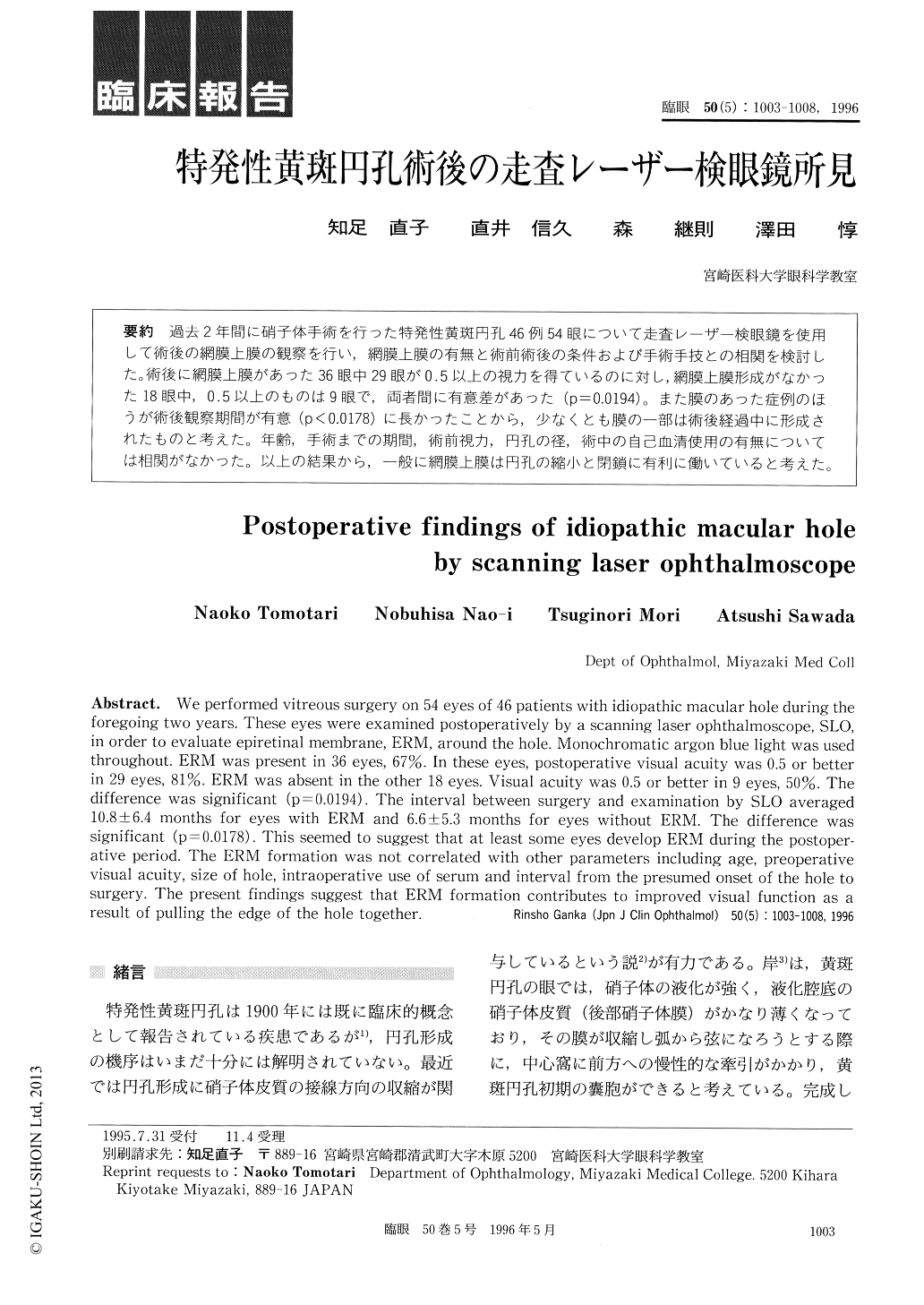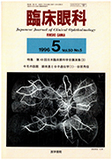Japanese
English
- 有料閲覧
- Abstract 文献概要
- 1ページ目 Look Inside
過去2年間に硝子体手術を行った特発性黄斑円孔46例54眼について走査レーザー検眼鏡を使用して術後の網膜上膜の観察を行い,網膜上膜の有無と術前術後の条件および手術手技との相関を検討した。術後に網膜上膜があった36眼中29眼が0.5以上の視力を得ているのに対し,網膜上膜形成がなかった18眼中,0.5以上のものは9眼で,両者間に有意差があった(p=0.0194)。また膜のあった症例のほうが術後観察期間が有意(p<0.0178)に長かったことから,少なくとも膜の一部は術後経過中に形成されたものと考えた。年齢,手術までの期間,術前視力,円孔の径,術中の自己血清使用の有無については相関がなかった。以上の結果から,一般に網膜上膜は円孔の縮小と閉鎖に有利に働いていると考えた。
We performed vitreous surgery on 54 eyes of 46 patients with idiopathic macular hole during the foregoing two years. These eyes were examined postoperatively by a scanning laser ophthalmoscope, SLO, in order to evaluate epiretinal membrane, ERM, around the hole. Monochromatic argon blue light was used throughout. ERM was present in 36 eyes, 67%. In these eyes, postoperative visual acuity was 0.5 or better in 29 eyes, 81%. ERM was absent in the other 18 eyes. Visual acuity was 0.5 or better in 9 eyes, 50%. The difference was significant (p=0.0194). The interval between surgery and examination by SLO averaged 10.8±6.4 months for eyes with ERM and 6.6±5.3 months for eyes without ERM. The difference was significant (p=0.0178). This seemed to suggest that at least some eyes develop ERM during the postoper-ative period. The ERM formation was not correlated with other parameters including age, preoperative visual acuity, size of hole, intraoperative use of serum and interval from the presumed onset of the hole to surgery. The present findings suggest that ERM formation contributes to improved visual function as a result of pulling the edge of the hole together.

Copyright © 1996, Igaku-Shoin Ltd. All rights reserved.


